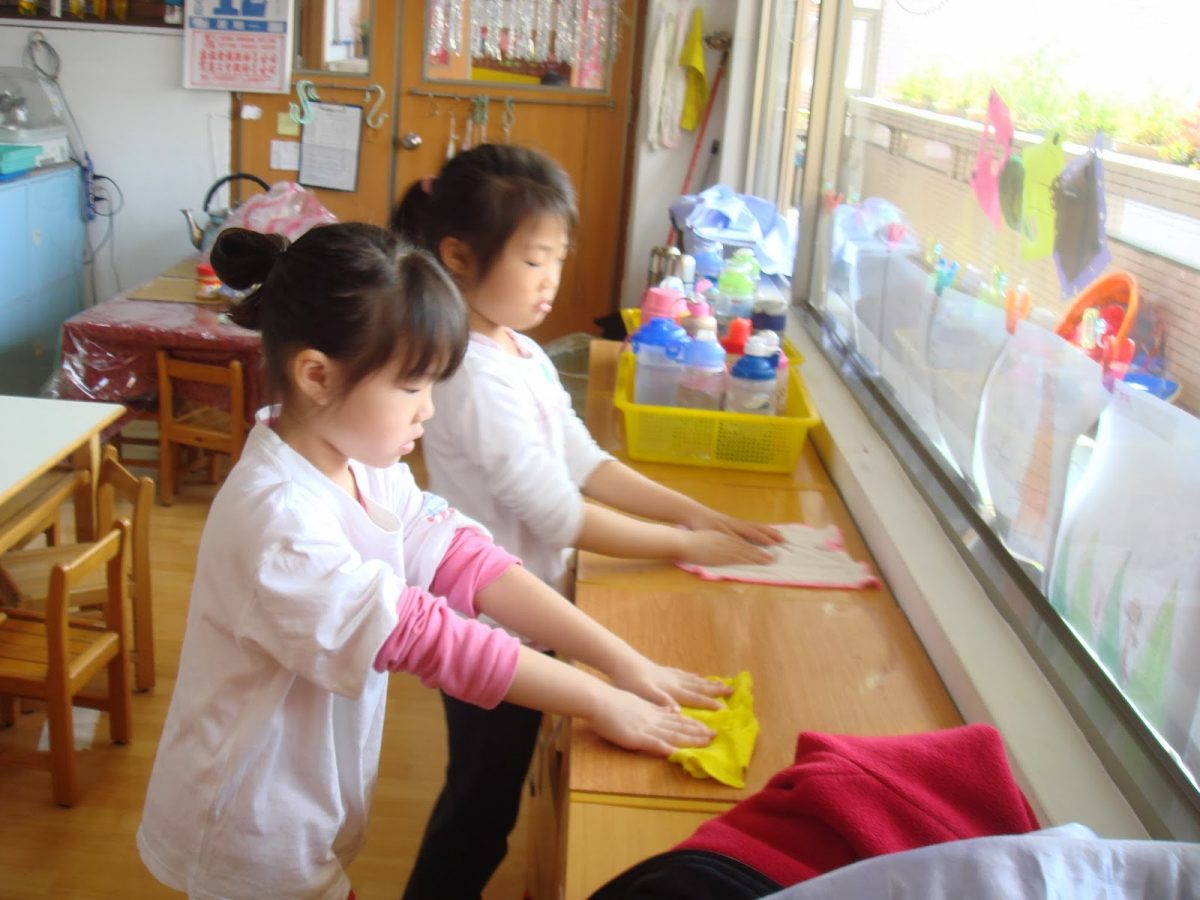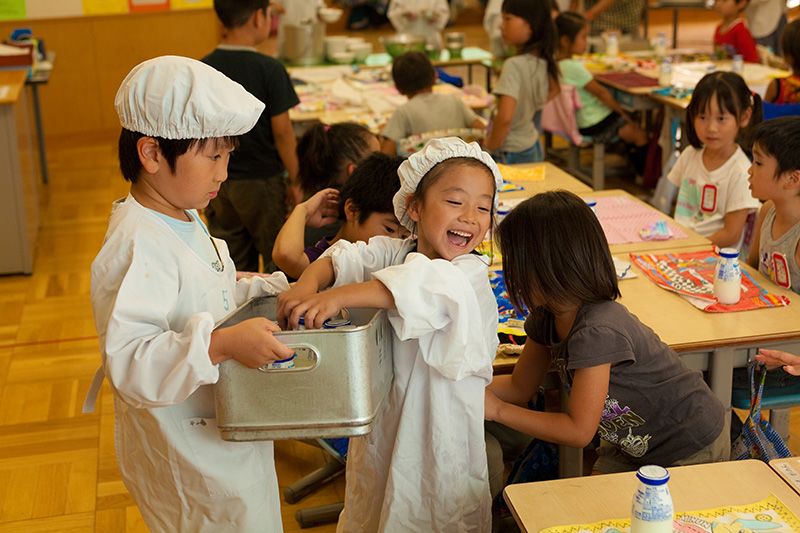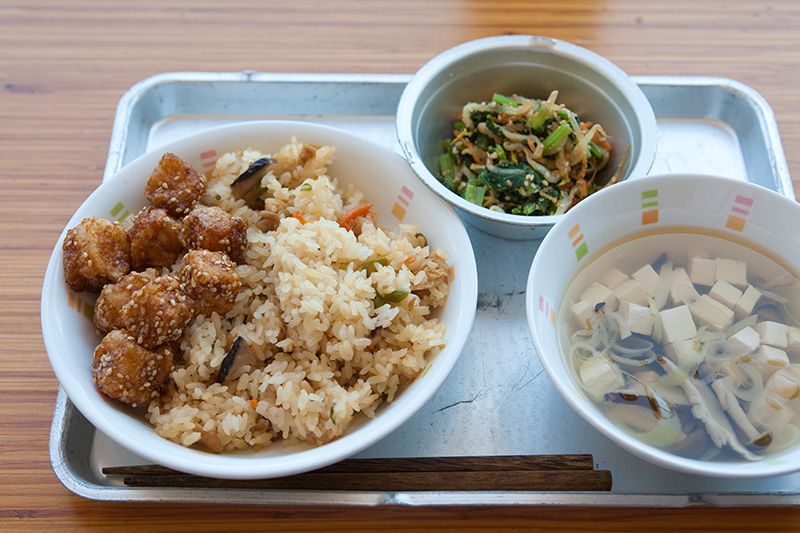School Life in Japan
The school day lasts from around 8:00 am to 3:00 pm but varies from day to day. Although it is a little longer than in the U.S. school day, Japanese students generally have more free time and breaks during their time at school. Sports clubs, even ones for elementary school, sometimes require students to show up for practice early in the morning or stay at school until 6:30 or 7:00 pm. Souji ("honorable cleaning") is a period of about 15 minutes each day when all activities come to a stop, mops and buckets appear and everyone pitches in cleaning up. The teachers and principals often get on their hands and knees and join students.

Japanese schools don't have any janitors because the students and staff do all the cleaning. Students in elementary school, middle school, and high school sweep the hall floors after lunch and before they go home at the end of the day. They also clean the windows, scrub the toilets and empty the trash cans under the supervision of student leaders. During lunchtime, students sometimes help serve the meals and clear away dishes.
All primary school kids eat school lunch, and about 8 percent of middle school students do. Japanese students eat their lunches in the classrooms (there are no cafeterias in Japanese schools) and help prepare and serve school lunches. Food is served from stainless serving trays and large pots by students, who sometimes wear surgical masks, aprons and hair protection. The food is often prepared in a kitchen on one floor and transported to the classroom on special carts using special elevators.

Classrooms are not heated or air conditioned. In the winter students wear their winter coats, scarves and gloves. Sometimes their ears and noses turn red and they can see their breath. In July, they tolerate extremely hot classrooms without even fans.
Children in Japan learn to get ready at an early age. In kindergarten they are taught to fold their jackets properly and always have tissue in one pocket and a handkerchief in the other. In grade school they learn to have three sharpened pencils in their desk---not four, not two---and always have glue, rulers and erasers close at hand in their pencil boxes. Elementary school students change into slippers when they arrive at school and put their shoes on special shelves. They all carry the same kind of correct backpack and are informed of the one correct way to adjust its straps.
Little Free Time for Children in Japan
Elementary school students have plenty of time to play around with their friends after school if they are not too busy with after-school activities. A typical middle school or high school student, however, arrives home from school at around 4:00 pm, has a quick snack and attends school classes, often three times a week from 5:00 pm to 10:00 pm. Sometimes students have school classes on Saturday and all day Sunday too.
Elementary school kids are usually very busy with activities two or three days a week after school. Girls usually take ballet, dance or piano. Boys play baseball or do karate. Both boys and girls take English, calligraphy, arithmetic or swimming lessons.
One of the biggest tragedies of the Japanese education system is the fact that children and teenagers study all the time and they have little time left over for fun or developing social skills.
A typical Japanese student takes a break after school and then runs off to juku classes. Later he or she often does homework. One Japanese student told U.S. News and World report, "I can play an hour with my friends before school."
Adapted from:



